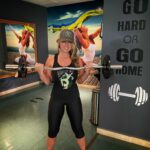
Wilderness Athlete REBOOT
February 9, 2021
Cow Elk Hunt in Colorado with Ashlee Lundvall & Kristy Titus
March 3, 2021As hunters, every year we determine what we are hunting and where. Then we begin the planning stages. We get online and study maps, subscribe to hunt data sites that help to familiarize ourselves with an area, learning everything that we can about our unit and we evaluate our gear all in order to be prepared for what lies ahead. It is a process. When the time comes, we get out there and hunt.
Led by determination, we put in countless mountain miles. We have the discipline to wake up long before the sun rises, often staying afield after the sun sets. We persevere through bad weather, we practice temperance and self-control, fueling our body for the physical challenges that are ahead of us each day.
As a hunter, this mindset comes naturally and it is necessary in order to consistently fill tags. There is no difference when it comes to being physically fit. The same mindset of determination, discipline, perseverance, temperance and self-control are all required.
The fact of the matter is that the burden of achieving any goal, especially as it relates to health fitness will be on YOU and YOU alone. It comes down to one simple thing; How bad do you want it?
It is a fact that 87% of all people who join health and fitness facilities cite weight loss as their primary goal for joining. Sadly, up to 65% of these people will quit within the first six weeks of joining. It is just like the hunters we see afield that quit when the going gets tough or fail to put in the work. This is why the some hunters consistently fill tags, while others do not and why some individuals are physically fit while others are not.
The big question is who do YOU want to be? Get your mind right and your body will follow. Today is a great day to remind your body how strong you are.
What Is Your Goal- Define It. Be specific.
Why- State the purpose for your goal.
How- Determine the methodology which you will use to accomplish your goal.
Identify Your Desire For Change- How is achieving your goal going to better your life? Use this answer to motivate you every time you want to quit or your determination waivers.
You must apply the same principals of being a successful hunter to being successful in fitness. Led by determination, get in your workouts. Have the discipline to wake up before the sun rises, if you need the extra time to get in the work. Persevere even when you are tired, keep going. Practice temperance and self-control, fueling our body with whole natural foods, avoiding high sugar, processed meals and alcohol.
Because weight loss is cited most commonly as a primary fitness goal I want to address the difference between FAT LOSS and WEIGHT LOSS. It is common for people to begin an exercise program and actually gain weight in the beginning stages, so keep in mind that if you are trying to lose body fat ultimately the scale weight plays a minor role in your evaluation process. Consequently, in order to effectively assess your fat loss, use the following guidelines;
1) Evaluate your current level of energy, strength and concentration. If any of these functions have declined, and you have lost weight it is likely a result of having lost a considerable amount of lean body mass, also known as muscle. If these functions have improved while experiencing weight loss however, it is highly likely that you have lost body fat.
2) Evaluate how your clothes are fitting and how you appear to yourself visually in the mirror. If your wardrobe is fitting looser and you appear to be getting leaner visually (not smaller) while gaining weight, you can rest assured that you are gaining lean body mass at a rate that is faster than that which you are losing body fat.
3) Evaluate your body weight and body fat percentage. Keep in mind that this should be the third and final step of your body composition evaluation. Even if your weight and body fat percentage appears to have increased while steps 1 & 2 show positive results, it is still very likely that you have lost body fat and gained lean body mass. This is due to the fact that the body loses fat in certain places faster than others which, when combined with a number of other variables may cause an increase in subcutaneous water retention.
Getting Started
Whether you are starting a fitness program or ramping up your existing program, I have put together some answers to frequently asked questions that will help get you going in the right direction.

Strength Training Q & A
How many sets should I be doing to increase my size and strength?
The total number of sets that you perform to failure for each body part should typically not exceed three. In many cases, when training to failure, two sets may be more than adequate and is equally effective for muscle toning and shaping.
What is the best repetition range for increasing size and/or strength?
Depending on your current level of fitness, muscular growth can occur efficiently within a broad repetition range (6-15). If however, you have been weight training regularly for a long period of time and have learned how to effectively incorporate proper biomechanics, full range contractions, you may find that muscular hypertrophy is accelerated when you train within the 6-8 repetition range.
Should I perform a different exercise each time I weight train?
Scientific data has suggested that altering the weight training exercises that you perform each time you lift, is perhaps the most effective way to promote favorable changes in muscular size and shape.
Lately my muscles have been staying sore for up to 4 days preceding a hard strength training workout. Is that a bad sign and what exactly causes the soreness?
There are basically two kinds of muscle discomfort that we encounter, especially as a result of engaging in strength training activities.
AMS- Acute Muscle Soreness is usually caused by the accumulation of lactic acid and/or other biochemical that result from repeated and intense muscular contractions.
DOMS- Delayed Onset Muscle Soreness may be a result of micro tears in the tendon sheaths and/or muscle tissue itself due to repeated forceful eccentric contractions which take place during the lengthening phase of a weight training exercise.
Cardiovascular exercise performed at a moderate pace can actually increase blood flow to the affected muscle, which may help to expedite the reduction of soreness. Other methods to help reduce DOMS include applying ice, gently stretching and massaging the affected muscles.
Wilderness Athlete Omega 3 Fish Oil is a great natural anti-inflammatory. You can even take over the counter ibuprofen to offer relief if needed. If lifting causes you sore joints, look at prevention first- a good healthy joint supplement like Wilderness Athlete Joint Advantage will protect and lubricate your joints and as a bonus- Joint Advantage- has built in natural botanical extracts that are anti-inflammatories.
Muscle recovery peaks during your sleep. Wilderness Athlete Midnight Build infuses nutrients and adaptogens into the repair process that your body is under during sleep helping to reduce muscular soreness while improving natural testosterone production.
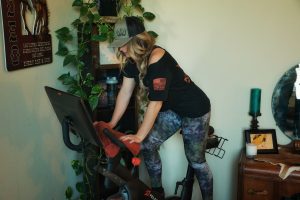
Cardiovascular Training Q&A
How often should I do cardiovascular exercise to get results?
Two things to keep in mind here are frequency and duration. Both are critically important. To induce positive changes in body composition, for body fat loss, you should engage in cardiovascular exercise at least 4 times per week for no less than 30 minutes each session. Choose an exercise that uses the large muscles of the hips, thighs and buttocks such as walking on an incline treadmill, riding a stationary bike, or using a stair climber.
*Engaging in cardiovascular exercise 5-6 days a week for 60-75 minutes each session should ultimately be achieved if you want to maximize the rate of fat loss and cardio-respiratory conditioning.
How fast should my heart be beating while I am exercising?
The easiest way to determine your recommended target heart rate is to use the Age Predicted Maximum heart rate formula.
Subtract your age from 220, then multiply that number by a percentage depending on what your current level of fitness is combined with your desired health and fitness goal. A general guideline for training sensitive zones are provided below, however, caution needs to be taken not to exceed your fat burning zone if you are just beginning an exercise program. It is recommended that you seek professional guidance in determining your recommended training sensitive zone.
Fat Burning Zone: 60% to 75% of maximum heart rate
Fitness Zone: 75% to 85% of maximum heart rate
Performance Zone: 85% t0 100% of maximum heart rate
220-Age x 70%= Fat Burning Zone (+- 4 beats)

How long should I wait to eat before and after exercise?
Many people believe that you should exercise on an empty stomach to burn body fat faster. In reality, if you exercise in a state of hypoglycemia (low blood sugar) you may end up losing lean body mass and muscle tone. You may lose weight, because your body is breaking down lean body mass for glucose, therefore you are more likely to become a “smaller” version of yourself, instead of a “leaner” version.
How soon you should eat following a meal will depend on the time of your last meal and duration of your exercise session. Since the primary objective with every health and fitness goal is to achieve and regulate normal blood sugar levels, you should try to eat a properly structured meal every three to four hours throughout the day (from one hour of waking to two hours before going to sleep).
As far as eating before and after exercise is concerned, you should try to eat a meal approximately one hour before and one hour after your exercise session.
For example; if you wake up at 6:00am, you should try to eat your first meal by 7:00am. Then if you exercise for an hour or two, you should prepare to eat again between 9:00 – 10:00am.
Is it more effective to do cardiovascular exercises two times per day for thirty minutes or once per day for sixty minutes?
Performing cardiovascular exercise for sixty minutes per session is considerably more effective for fat loss and improving the cardio-respiratory system than two thirty minute sessions. This is a result of the body switching to a more concentrated source of energy (body fat) after thirty minutes of exercise, therefore causing a higher ratio of fat to be used for fuel.
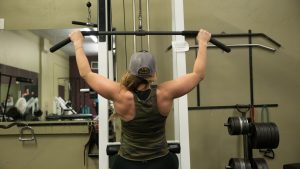
Training Example & Tips
First of all, use common sense in the weight room. Your warm up should be roughly half of what your training weight will be to achieve failure. After your warm up, do two sets to failure within your desired range of repetitions, then a drop set with your warm up weight again to failure. For your drop set, don’t focus on how many reps, focus on failure, whatever that number may be. Make sure that you are achieving a full range contraction throughout the entire range of motion.
We can only get stronger when we over load our muscles beyond what they are accustomed to. This can be accomplished in several ways;
- Number of Repetitions in an Exercise
- Number of Sets in an Exercise
- Increased Intensity with Active Resting Periods
- Increased Weight
Full Range Contractions
Make sure that you are lifting and appropriate weight that you can safely achieve a complete range of motion while your muscles are in a fully contracted state throughout the concentric and eccentric range of motion. This will accelerate muscle strength more efficiently while reducing the occurrence of injury.
*Below I have outlined a sample training plan. Modify if needed to your current level of fitness.
Monday- Chest/Arms/60 Minutes Cardio
Tuesday- Legs/60 Minutes Cardio
Wednesday- Back/Shoulders/60 Minutes Cardio
Thursday- Off
Friday- Chest/Arms/60 Minutes Cardio
Saturday- Legs/60 Minutes Cardio
Sunday Off
Monday- Back/Shoulders/60 Minutes Cardio.
With this training recommendation, all your body parts get trained twice in an 8 day period, while doing 2 exercises to failure per body part. Each time you train, change the exercises that you conduct, angles etc. This type of training will cause constant muscle confusion. Use google to help you come up with exercise ideas or hire a personal trainer for help.
Keep in mind that you are tearing down in the gym so you need days off to rebuild.

Nutrition- The Basics
Individual caloric/nutrient needs vary significantly from person to person. However, here are a few tips that are the foundation of good nutrition:
- Eat your first meal within an hour of waking and a small meal every 3-4 hours until 2 hours before bed.
- You should never wait so long to eat that you feel starving or eat so much that you feel thanksgiving full.
- Do not work out on an empty or pre-breakfast stomach. Eat a small meal to stabilize your blood sugar and ensure that you have the proper nutrients available to your body to power you through your workout.
- Each meal should contain roughly the same nutrient ratios per meal (amount of complete protein, complex carbohydrates and fat). The percentage of those ratios will vary from person to person. For example, 45% Complete protein, 35% carbohydrates, 20% fat.
- Try to eat at least two fresh vegetables and two fruits each day.
- Limit yourself to one shake, meal replacement or bar each day.
- Quick tip, if you are eating red meat, dark poultry or salmon, the remainder of your meal should not contain any added fat. There will be more than enough contained within those high fat meats.
- Be sure to drink AT LEAST 3-5 liters of water each day.
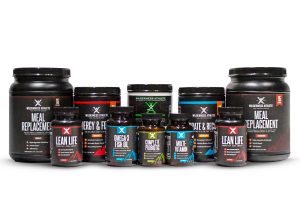
If You Fail To Plan, You Plan To Fail
Your nutrition and exercise program must be a priority in your life that you literally schedule into your day. Invest in a day planner and schedule in your workout dates and times and plan other activities around those workouts. NO EXCUSES.
A journal is a great way to stay accountable and on track with what you are actually eating and frequency of your exercise. Wilderness Athlete’s 28 Day Rebuild Program will help you get and stay accountable and motivated for a 28-Day kick start period.
Included in the 28 Day Rebuild Program:
* 28 Day Workout Program + Digital Access
* 28 Day Meal Plan
* Guide & Tracker
* Brute Strength (x2)
* Brute Force
* Midnight Build
* Hydrate & Recover
* Energy & Focus
* High Performance Multi-Vitamin
* Complete Probiotic
* Omega 3 Fish Oil
* Green Infusion
Preparation is key to success. Take one day a week such as Sunday and prepare all of your meals for each day, including snacks. Plan enough meals for the number of days you are working so that all you have to do is grab your food and go.
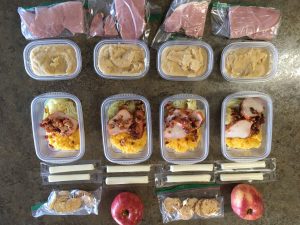
Nutrition Q & A
| Why do I need to eat protein, carbohydrates, and fat at every meal?
Every single one of your meals, all day long from breakfast, snacks, lunch to dinner should all have roughly the same nutrient ratios of carbohydrates, complete protein and fat and roughly the same number of calories in each meal. Meaning you should not gorge on a giant dinner and eat like a bird all day long. Your body is going to function and feel its best when your blood sugar is stable. A proper balance of carbs/complete protein/fat at each meal will provide the nutrients your body needs for repair/rebuild/recovery at a cellular level and allow for efficient use of stored body fat as a fuel source. |

I’ve been using protein bars and shakes at least 3-4 times per day because they are so convenient. Is this bad for me?
If you want to achieve your health and fitness goals as fast as possible, eat whole natural foods as often as possible. Including high quality meal replacement bars and shakes like Wilderness Athlete Performance Products, can offer a convenient alternative to preparing or purchasing a structured “whole foods” meal, but should not be used more than one time per day.
A clean diet comes second to mental fortitude. If you don’t have the mind that pushes you into the gym driving and motivating your workouts, you have nothing and if you are doing the work, you want the results which will only happen if you to fuel your body with a clean consistent meal plan and plenty of rest. Balanced clean eating will allow your body to repair, rebuild and recover from your weight training while affording your body all around optimal performance. You can literally feel and see the difference with clean eating and consistent training.

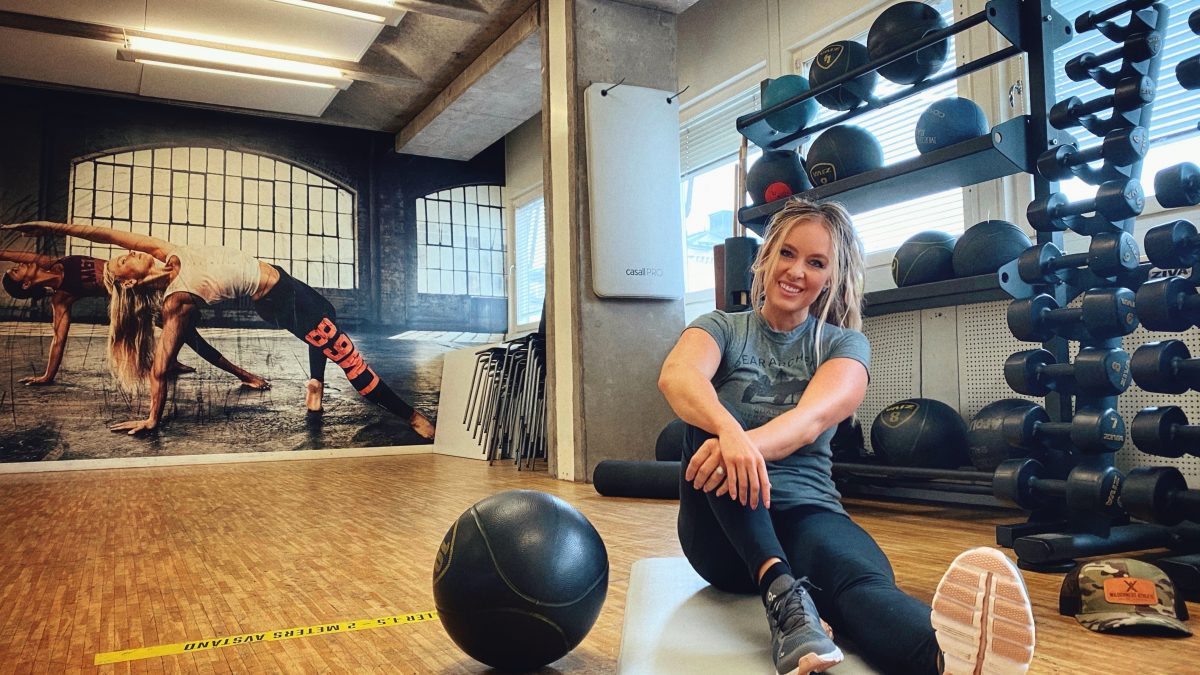
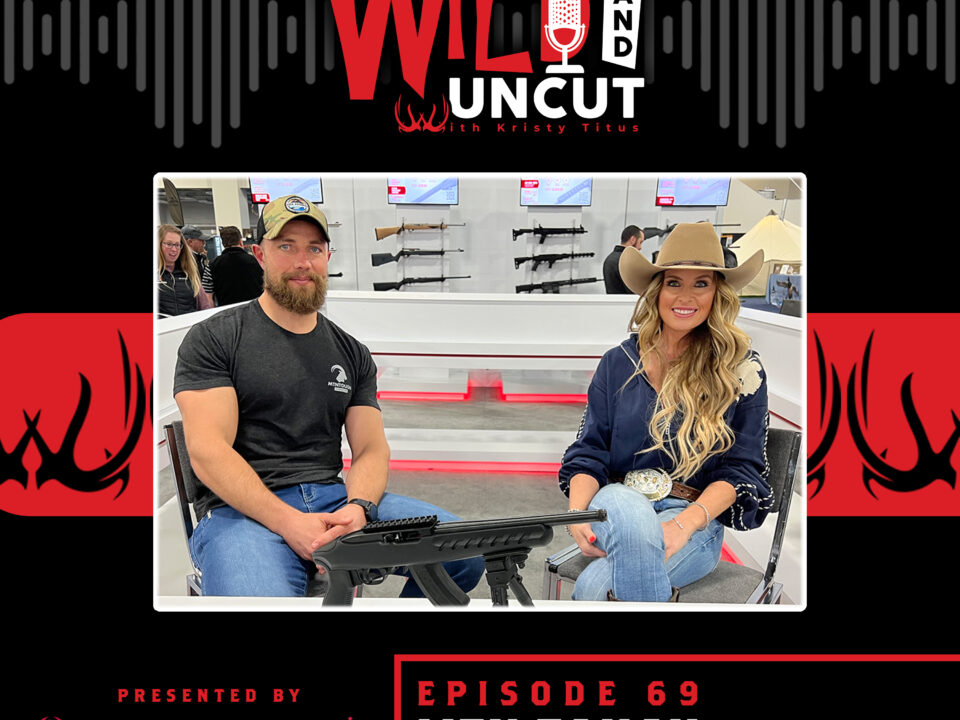

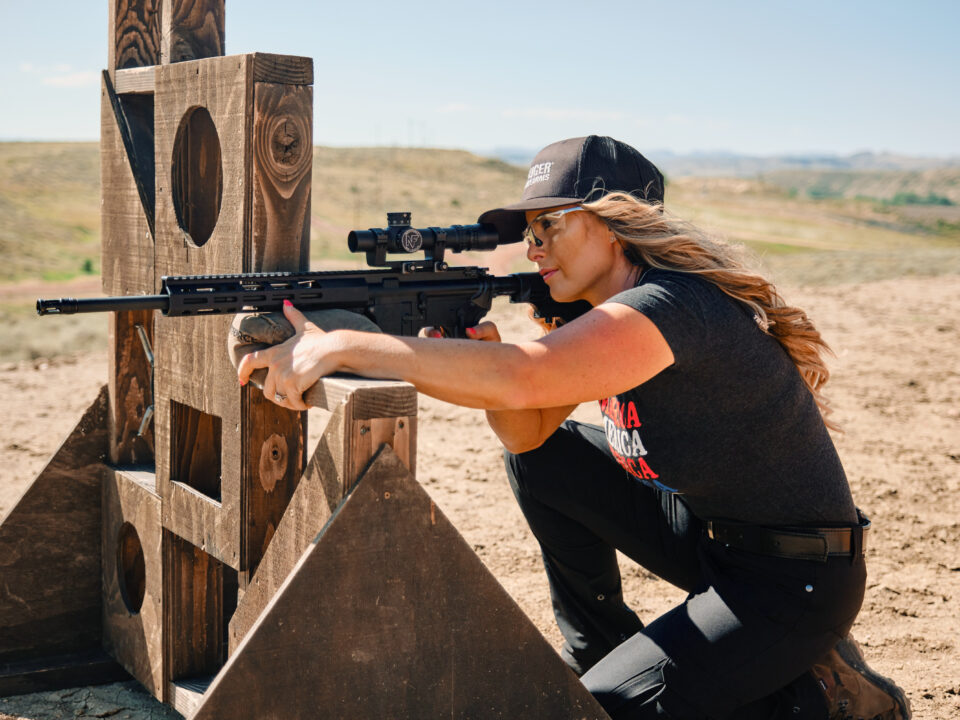
1 Comment
Thank you so much for sharing Kristy! My life and health has been impacted in a powerful way for the better by the inspiration you provide and how you so generously share helpful information and strategies for success to us all. Thank you.